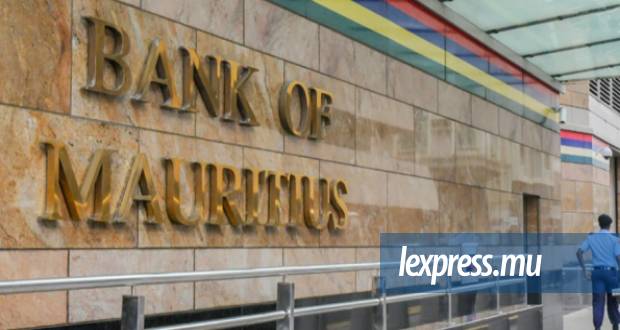Publicité
Baa3, stable outlook rating
Moody’s Call for Action
Par
Partager cet article
Baa3, stable outlook rating
Moody’s Call for Action

The BoM contributed Rs 55 bn from its capital reserves to the 20/21 Government Budget.
Government’s fervent hopes for an upgraded country credit rating have been dashed by Moody’s. In its most recent credit profile for Mauritius dated Jan 24, Moody’s has maintained its “Baa3, stable outlook” rating. The authorities can still take comfort in avoiding a “negative outlook” rating, which carries the risk of loss of investment grade status. But, Government spared no effort in spreading the illusion of a strong and booming economy, and the failure to improve even to a “positive outlook” rating has caused great disappointment. It would have signalled an enhancement away from borderline junk status towards a potential upgrade to Baa2.
Need for progress
Moody’s also maintained the country’s credit rating on July 23, a year after the July 22 downgrade. This was accompanied by an improvement in Moody’s overall quantitative rating, or overall scorecard outcome, due to progress on three of four factors, namely, economic strength, fiscal strength, and institutions and governance strength. The Bank of Mauritius (BoM) then released a statement highlighting that “Moody’s upgrades the sovereign Scorecard-indicated outcome”.
The latest Moody’s credit assessment on Jan 24 did not indicate any progress in the overall scorecard outcome, and the ratings of the four constituent factors remained unchanged, in contrast to the July 23 evaluation. Understandably, neither Government nor BoM have reacted so far to the Moody’s report, which affirms the current rating on the expectation that “the headline fiscal and debt metrics will further improve”.
It is evident that the seeming improvement in debt and fiscal indicators has not been sufficient to warrant a better rating. For Moody’s, an upgrade requires progress towards sustainable medium-term growth of 5% per year and a more pronounced reduction in the Government debt burden. Moody’s anticipates GDP growth of 5% to 4% over the medium term, despite the official estimate of 7.1% in 2023 and 6.5% in 2024. Moody’s also projects that the fiscal balance will gradually narrow to reduce Government debt by around 5% points of GDP in fiscal year 2023–24 and another 2% points in the following year.
Moody’s anticipated outcomes are based on official economic statistics and projections. An updated IMF country report would have provided useful guidance in this regard, especially for public finance. But, the IMF did not conduct a consultation mission in 2023, for whatever reason. Moody’s does express skepticism about the sustainability of official GDP growth rates. In fact, the strength of the economic recovery is largely overstated by official GDP statistics.
GDP overestimation
As explained in a previous article, Statistics Mauritius (SM) began adjusting BoM balance of payments statistics on June 22, by moving part of net income of Global Business Companies (GBCs) from the primary income account, which is not included in GDP, to the services account, which is included in GDP. What SM describes as “the inclusion of GBC services in exports of services” calls for proper explanation. Ignoring this adjustment, BoM’s balance of payments data continues to place GBCs in the primary income account, and not the services account. In 2022 and 2023, around 125% of net GBC primary income, or more than Rs 90 bn, was recategorized by SM as GBC services. As a result, GBCs displayed negative primary income of about Rs20 bn, in contrast to positive primary income in prior years.

GBCs are thus disbursing more investment income, i.e. interest and dividends, than they are receiving. This abrupt trend reversal is hard to explain. The excessive adjustment being made to GBC investment income is most likely meant to artificially boost services exports and GDP.
In addition, GDP for 2023 is also being pumped up by overstated public investment figures. While social housing investment has increased significantly, the Metro Express extension has not proceeded as planned. The most recent trade data shows that imports did not increase in the last two quarters of 2023, while SM projects that household consumption rises sizeably by Rs43 bn during this period.
All GDP components, namely consumption, investment, and net exports, are being overstated. Lowering the fiscal and debt ratios by inflating the GDP gives the misleading impression that fiscal consolidation is really happening.
Fiscal deficit and debt
However, a closer examination of the fiscal and debt position reveals little progress. Moody’s has traditionally focused on Budgetary Government operations to evaluate the trends in the fiscal deficit and debt.
However, the true fiscal deficit is understated by common accounting tricks, such as passing off Government spending as loan and equity transactions, transferring surplus income from state-owned companies to Government revenue, and using special and other extra budgetary funds, particularly the National Resilience Fund and the Projects Development Fund, to undertake off-budget expenditures.
In Moody’s view, the fiscal deficit has been falling from 19% of GDP in 20/21 to 6% in 21/22, and further to an estimated 3% in 23/24. But, a consolidated fiscal deficit that also includes net spending by special funds, as well as disguised loan and equity transactions, does not show any improvement in fiscal consolidation. After declining from 14% of GDP in 20/21, the consolidated fiscal deficit remains constant at around 6% of GDP until 23/24.

The level of public debt is also kept artificially low by substantial recourse to central bank money, and by an arbitrary consolidation adjustment that is not in line with the IMF’s debt methodology. BoM contributed Rs55 bn from its capital reserves to the 20/21 Government Budget. A BoM vehicle invested Rs25 bn as equity in a state-owned holding company to bail out the national airline.
In its reports, the IMF has been quite critical of the central bank’s role in funding quasi-fiscal operations. When BoM funding is considered, public debt exceeds official estimates by over 10% of GDP, which puts Mauritius in sharply worse comparison with other Baa3-rated countries.
External deficit
Moody’s estimates that the country’s current account (C/A) deficit of the balance of payments will drop to 5.9% of GDP in 2023. According to the latest trade statistics, the C/A deficit will improve even more, to 5% of GDP in 2023, or down to the same level as in 2019.
Between 2019 and 2023, the C/A deficit is unchanged at USD0.7 bn. The goods deficit grew from USD3.1 bn to USD3.6 bn, mainly offset by GBC net inflows which climbed from USD0.9 bn to USD1.2 bn. Tourism services also helped to stabilize the external deficit, but Moody’s claim of “tourism earnings far exceeding 2019 levels” is overdone, unless stated in rupees. Gross tourism earnings were only 11% higher, rising from USD1.7 bn in 2019 to USD1.9 bn in 2023.
Moody’s analysis of the external situation is lacking in two key respects. First, the C/A deficit, excluding net inflows of GBCs, is a better measure of the domestic economy’s forex needs and of its external vulnerability. The C/A deficit, excluding GBCs, worsened from 11% of GDP in 2019 to 14% in 2023. Secondly, Moody’s ignores the existence of unofficial exchange restrictions and of chronic forex scarcity, which helped to curtail imports and contain the C/A imbalance.

Foreign reserves
Moody’s expects foreign reserves to stabilize at the current level of about USD7 bn, and “to provide a sizeable buffer to potential external shocks”. At Dec 23, BoM gross international reserves amounted to USD7.2 bn, but only USD5 bn on a net basis, after accounting for external borrowings through repos of USD1.6 bn and foreign currency deposits by domestic banks estimated at USD0.6 bn.
Moreover, BoM held investments of USD4.6 bn in foreign securities, partly reclassified as “hold to maturity” financial assets to avoid valuation losses brought on by the increase in global interest rates. BoM is therefore facing tight liquidity constraints.
Consequently, BoM foreign reserves do not offer adequate protection to cope with an unfavorable external shock, even if currently representing over ten months’ imports. Reserve adequacy must also account for liquidity restrictions and a wider range of risks of possible drains on the balance of payments, from short-term external debt to other external liabilities. The extent of the external deficit, excluding GBCs, and the limited resources available to BoM for foreign exchange intervention are contributing to a further weakening of the rupee.
Conclusion
Moody’s report of Jan 24 upheld the country’s investment grade status, but the underlying scorecard ratings show no improvement since July 23. Staying in investment grade will depend on expected fiscal consolidation and debt reduction. Moody’s analysis overlooks major issues, such as GDP overestimation, the lack of progress to effectively lower the fiscal deficit and debt, and the significant vulnerability of the external accounts. The forthcoming release of an IMF country report, following their visit last month, will undoubtedly provide further context and information for Moody’s next credit rating exercise. Concerns of a negative rating change remain alive, given the likely evolution of fiscal and debt metrics in this election year.
Publicité
Publicité
Les plus récents






